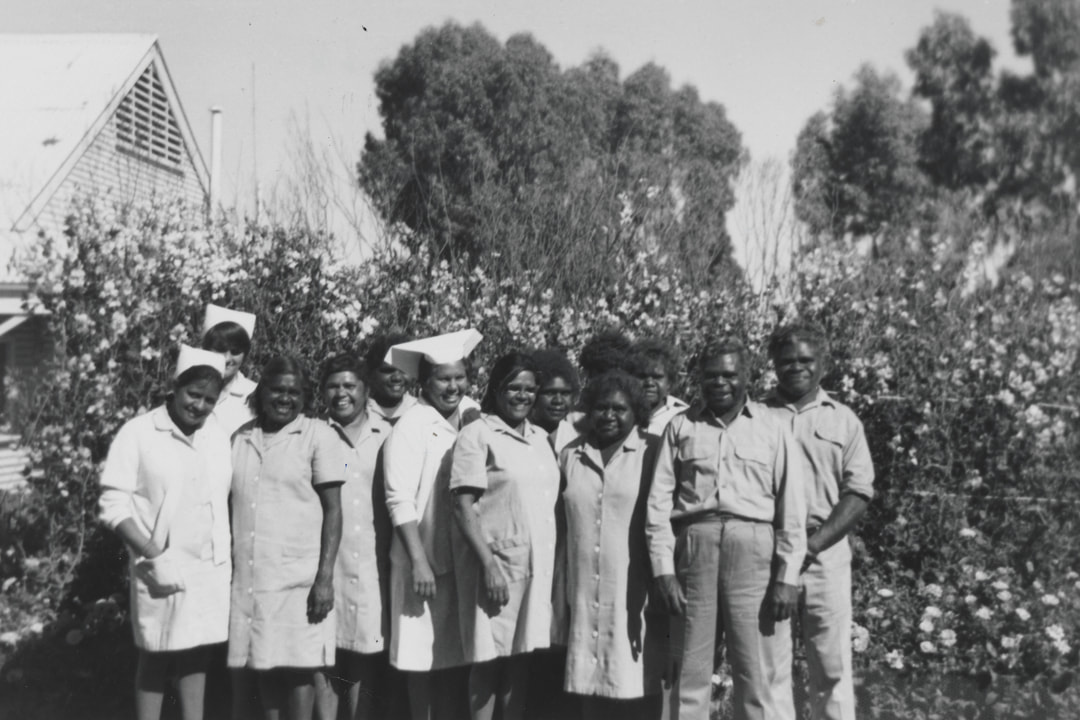Our history
Aboriginal and Torres Strait Islander peoples are advised that this webpage may contain images of people who have passed away
We were established in 1939 as the Superannuation Board, and currently, under the State Superannuation Act 2000, manage the Government Employees Superannuation (GES) fund and administer public sector super schemes.
For more than 85 years, we have continued to manage the super savings of current and former WA public sector employees. In that time, we have seen a lot of changes both here in WA and across the world.
Here are some key events in our history, from changes to super regulations and how we communicate with our members, to the global impact of COVID-19, which have shaped who we are and what we do today.
1930s – planning ahead
In financial terms, the early 1930s were marked by The Great Depression. Across Australia and other parts of the world, people became more aware of the idea of financial security and the need to plan for the future.
On 31 January 1939, the Superannuation and Family Benefits Act was approved. The Pension Scheme opened under the management of the Superannuation Board.
The Superannuation Board was set up to administer super benefits for people permanently employed by or under the WA State Government and to help support the families of those employees.
Under the Provident Scheme, which also opened under the administration of the Superannuation Board, the voluntary provident account was introduced for female public sector employees in January 1948. The subsidised provident account was then introduced in November 1961.

Corner of Barrack Street and Hay Street, Perth, 1939.
Sourced from the State Library of Western Australia, 128376PD
1986 – the beginning of compulsory super
At the start of the 1980s, superannuation wasn’t widely available in Australia. If you did have an account, it generally couldn’t be transferred if you changed employers.
In 1986, compulsory super was introduced under the Commonwealth Occupational Superannuation Standards Act (OSS Act) for those employed under an award to help the wider working population to build their retirement savings through super.
Our original super schemes – the WA Public Sector Pension and Provident Schemes – both closed to new members.
1987 – Government Employees Superannuation Act 1987
Until 30 June 1987, the Superannuation Board comprised three Board members. Two were appointed directly by the Governor and one was elected by a majority of contributors.
On 1 July 1987, the Government Employees Superannuation Board replaced the Superannuation Board. Now an independent Board, the Government Employees Superannuation Board comprised a Chair, three employer representatives and three member representatives.
1987 was also the year that the Government Employees Superannuation Fund was established, and we introduced Gold State Super, our untaxed, defined benefit scheme. In 1988, we introduced our Non-contributory Service Scheme, which was an untaxed non-contributory defined benefit. Under this scheme, if or when you resigned or retired, a benefit of 3.3% of your average salary was paid for each year that you were a member.

Looking down onto crowds of shoppers in the Hay Street Mall, Perth 1 July 1986.
Sourced from the State Library of Western Australia, 390082PD
1992 – the beginning of compulsory super payments
On 1 July 1992, the Commonwealth Government introduced Superannuation Guarantee (SG), a compulsory rate of contributions employers must pay into a super account on their employees’ behalf. This replaced the OSS Act arrangement.
Back then, your employer would have been required to pay 3% of your salary into your super account.
1992 – West State Super was introduced
We opened West State Super to new members who joined us from 1 July 1992. As part of the introduction, our Non-contributory Service Scheme was closed. At this time, West State Super was designed to provide members with a guaranteed annual earnings rate of CPI plus 2% on their account balance when the benefits were paid.
In 1995, Gold State Super closed to new members.
1996 – changes across national super
WA became a signatory of the Heads of Government Agreement (HOGA) with the Commonwealth. Under the HOGA, the WA State Government agreed to align its state super arrangements to national standards - as far as practicable.
2001 – a new governing framework and more investment options
On 16 February 2001, the State Superannuation Act 2000 and State Superannuation Regulations 2001 came into effect, the governing framework under which we continue to operate. This introduced regulatory changes to our super schemes and gave us the flexibility to offer more investment options for members by expanding our products and services.
From 1 July 2001, we introduced member investment choice and West State Super became an (untaxed) market-linked scheme. As a member, this change meant you would now have a choice of investment options for your super.

2002 – more withdrawal options
In July 2002, we introduced Retirement Access. As a retired Gold State Super or West State Super member, this change meant you could now make partial withdrawals at any time by transferring to this scheme.
The rate for compulsory employer SG contributions increased to 9%.
2003 – the launch of new retirement products
In 2003, we introduced Retirement Income Allocated Pension (now known as ‘RI Allocated Pension’). In 2004, our Retirement Income Term Allocated Pension (now known as ‘RI Term Allocated Pension’) was launched.
2004 – moving into the digital age
We launched our Member Online and Employer Online services in 2004. This addition to our website now meant you and your employer could transact with us online while also accessing information about your super.
In the same year, we started using the name ‘GESB’, as we are known today.
2006 - phased retirement introduced
In May 2006, we introduced our Transition to Retirement Pension. This option made it possible to access your super as an income stream while still working.

2007 – the arrival of GESB Super and a new website
We introduced GESB Super – a market-linked taxed super scheme – on 16 April 2007.
We appointed an Insurer and introduced Death, Total and Permanent Disablement and Salary Continuance Insurance for our GESB Super members, giving them the flexibility to change the amount insured so that it could better meet their individual needs.
West State Super closed to new members on 16 April 2007.
Retirement Income Term Allocated Pension closed to new members on 20 September 2007.
In November, we launched our new website with information personalised to members’ needs. As a member, you could now use online calculators and tools to help you learn more about contributions, retirement and budget planning, and investment risk.
2008 – insurance changes
The insurance we provided to GESB Super members was expanded to cover our West State Super members.
Retirement Access was closed and transferred into GESB Super on 1 April 2008.
2010 – a money management milestone
In 2010, as the labour market recovered from the 2008 Global Financial Crisis, we reached $10 billion in total funds under management.
2011 – a new online service for employers
We introduced our Clearing House service, in preparation for the WA Government’s incoming Choice of Super. Through this online service, employers would be able to pay their employees’ choice contributions via Employer Online.
2012 – the beginning of Choice of Super and eStatements
In March 2012, the WA Government introduced Choice of Super. As a WA public sector employee, you could now choose the super fund for your employer’s super contributions.
From this point onwards, you had the option to receive electronic statements (eStatements), which offer a number of benefits including helping to keep fees low.
2013 – MySuper introduced
In July 2013, the Commonwealth Government introduced MySuper as part of its Stronger Super reform.
MySuper is a simple and cost-effective super product designed to offer low fees, simple features and limited investment options. Both GESB Super and West State Super meet the key requirements of MySuper.

2014 – new milestones and more investment information
We reached $20 billion in funds under management, doubled from only four years earlier.
We introduced comprehensive, interactive investment information on our website. This included investment options summary pages, investment return and unit pricing graphs, and comparisons of investments in select plans, so as a member you could now easily compare your investment options.
On 1 July 2014, we appointed Link Group as our administration services provider.
2016 – our features became even easier to compare
Our default investment options for GESB Super and West State Super became known as ‘My GESB Super’ plan and ‘My West State Super’ plan. These plans were designed to make it easier to see how these plans offer the key features of a MySuper product.
In line with MySuper requirements, we also introduced online product dashboards for My GESB Super plan and My West State Super plan. As a member, this meant it was easier than ever for you to compare these plans with similar offerings by other funds.
2018 – a paperless approach and new online tool
This was also when we introduced paperless first when sending out statements and other important information and notifications about your account.
We launched our Retirement planning calculator, an online tool which can help you work out how much super you are likely to have when you retire, and how long it is likely to last.
2019 – moving into a new future
We reached $30 billion in funds under management.
We started our reconciliation journey with the launch of our first Reconciliation Action Plan and related initiatives. This was a vital first step in our reconciliation journey as we continue to build strong, respectful partnerships with Aboriginal and Torres Strait Islander peoples and communities, including our members.
In 2019 we also introduced online statement summaries. If you didn’t opt out of receiving information electronically, you now have access to an interactive visual summary of your account as at 30 June of each year.
We changed elements of the insurance we offer GESB Super and West State Super members, including removing the Activities of Daily Living (ADL) definitions for Total and Permanent Disability (TPD) claims.
We introduced online tools including a new contributions calculator, information videos, and our Live chat online messaging service.
We made changes to our website to make it easier to use if you have a disability. The changes we made were assessed as 100% compliant with Web Content Accessibility Guidelines (WCAG) 2.0 level AA criteria.

Hospital staff in Leonora, WA, circa 1970.
Sourced from the collections of the State Library of Western Australia and reproduced with the permission of the Library Board of Western Australia.
2020 – we continue to adapt to global changes
As the devastating impact of COVID-19 coronavirus spread across the world, the year marked by the words ‘uncertainty’, ‘unprecedented’ and ‘the new normal’ was one to remember.
Investment markets saw a lot of volatility. At GESB, our focus remained on supporting our members and taking a careful approach to managing investments.
We continued to adapt the services we offer to you as a member, including increasing our Member Services Centre staff, temporarily moving our seminars online, and publishing regular updates through a dedicated page on our website.
We made changes to our online member statement summaries, helping to make it even easier for you to use this tool and see the key details of your account at a glance.
2021 – embracing new opportunities
Our goal through 2021 and beyond is to continue as we’ve done through each stage of our history – adapting to ever-changing regulations, technology, economic conditions and global events while providing you with the information and tools you need to manage your super and plan for your retirement.
Thank you for printing this page. Remember to come back to gesb.wa.gov.au for the latest information as our content is updated regularly. This information is correct as at 09 May 2024.
